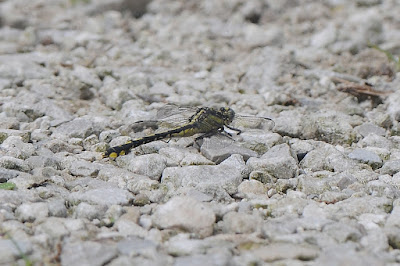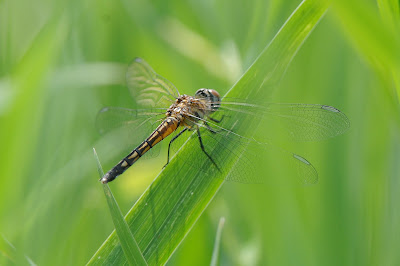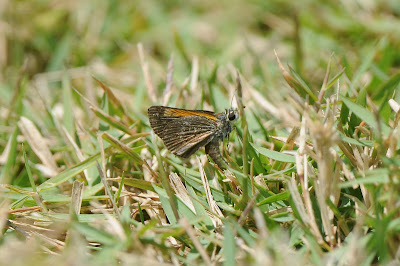I've been back in Iowa for a little while now so here are some insect photos from the last week or so.
First, you can't escape the SUMMER AZURES if you know what to look for. Here is one near my apartment:
Another common species here in Iowa, especially around tall grass, is the LEAST SKIPPER:

I honestly don't remember where I took this one, but it's a MEADOW FRITILLARY either way:
Another findable species around tall grasses and marsh edges is the striking BRONZE COPPER:
I was surprised to find this AMERICAN SNOUT at Chichaqua Bottoms. From the looks of the book, they have two flights but the first flight in mid-June is quite brief and not a lot of their collections happened then:
Another butterfly with the same story (of the uncommon first brood) is the FIERY SKIPPER. I had this at Chichaqua Bottoms as well:
I was happy to find a lifer butterfly at Chichaqua Bottoms, my first in Iowa this year. It's the long-overdue SILVERY CHECKERSPOT:
I'll switch gears now to odonates (dragonflies and damselflies), a group that I've been slowly learning. Don't get me wrong, I'm still a beginner and can only identify the simplest ones.
Starting with the clubtails, I was actually quite happy to find this guy at Chichaqua and actually be able to identify it, a JADE CLUBTAIL:
Another new dragonfly for me was this MIDLAND CLUBTAIL which was also at Chichaqua:
Some of the skimmers are brightly marked (and thus sometimes easy to ID). Here is the nicely marked male TWELVE-SPOTTED SKIMMER:
Here is a female of the same species:

I thought I had found something good when I stumbled on this thing. Turns out, it's just a female BLUE DASHER (which I've seen a bunch already):
Another familiar species is the WIDOW SKIMMER... here is a male:

... and two pictures of a female:

Another species I was happy to find and identify on my own was the DOT-TAILED WHITEFACE. I have found them now at Colo Bog in Story County as well as up in Marshall County. The first two photos are from Colo Bog:
... and these two photos from Marshall County:
Damselflies give me a lot of trouble though; I'm not sure if my humble photographs capture enough for identification or if I just have a bad case of I-don't-know-what-to-look-at.
Case and point, here is a BLUET that I'm not comfortable identifying:

However, I did get lucky with an easy one and snap a picture of this EASTERN FORKTAIL near my house:
Another neat insect to have at the house was this SIX-SPOTTED TIGER BEETLE on my porch:
I haven't started trying to identify other flies/bees but I took a picture of this one just because it posed nicely:

Ok ok, not an insect... but I'll throw in a picture from my neighborhood of an EASTERN COTTONTAIL with a mouthful:
























































